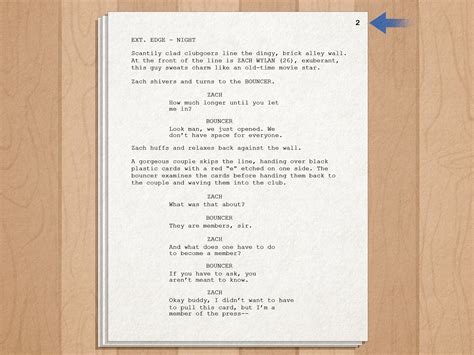How To Write a Screenplay: A Comprehensive Guide
So, you want to write a screenplay? The world of filmmaking is exciting, challenging, and incredibly rewarding. But before you can see your vision on the big screen (or the small one!), you need to master the art of screenplay writing. This guide will walk you through the essential steps, from initial concept to final polish.
I. Developing Your Idea: From Concept to Logline
The foundation of any great screenplay is a compelling idea. Don't get bogged down in details at this stage; focus on the core concept. Ask yourself:
- What's the story about? What's the central conflict? What's at stake?
- Who are your main characters? What are their motivations, desires, and flaws?
- What's the genre? (e.g., thriller, comedy, romance, sci-fi) This will inform your tone and style.
Once you have a solid grasp of these elements, you can craft a logline. This is a one-sentence summary of your screenplay that captures the essence of the story, highlighting the conflict and the stakes. A strong logline is crucial for pitching your screenplay to producers and agents. For example: "A disillusioned detective investigates a series of seemingly unconnected murders, uncovering a conspiracy that reaches the highest levels of power."
II. Structure is Key: The Three-Act Structure
Most screenplays follow a three-act structure:
Act I: Setup
- Introduction: Introduce your main characters and setting. Establish the initial situation.
- Inciting Incident: This is the event that throws your protagonist's world into disarray and sets the story in motion.
- Plot Point 1: This is a major turning point that commits the protagonist to the main conflict. It usually occurs at the end of Act I and launches the protagonist into the main plot.
Act II: Confrontation
- Rising Action: The protagonist faces escalating challenges and obstacles as they pursue their goal. This is where most of the screenplay's action and suspense take place.
- Midpoint: A significant turning point that often shifts the power dynamic or reveals crucial information. It can be a victory or a defeat for the protagonist, but it always changes the course of the story.
- Plot Point 2: Another major turning point, usually a significant setback or revelation, that forces the protagonist to change their approach or strategy. It occurs near the end of Act II.
Act III: Resolution
- Pre-Climax: The protagonist prepares for the final confrontation.
- Climax: The highest point of tension and action in the story. This is where the central conflict is resolved.
- Resolution: The aftermath of the climax. Loose ends are tied up, and the audience gets a sense of closure.
III. Writing Your Screenplay: Formatting and Style
Screenwriting has its own unique formatting conventions. Use screenwriting software (like Final Draft or Celtx) or follow these guidelines:
- Scene Headings: Clearly indicate the location and time of day (e.g., INT. COFFEE SHOP - DAY).
- Action Lines: Describe the visual action concisely and vividly.
- Dialogue: Write realistic and engaging dialogue that reveals character and advances the plot.
- Parentheticals: Use sparingly to provide brief instructions for the actors' delivery (e.g., (whispering)).
- Transitions: Use standard transitions like "FADE OUT," "CUT TO," and "DISSOLVE TO."
IV. Revision and Feedback
Writing a screenplay is an iterative process. Expect to revise your script multiple times. Seek feedback from trusted readers, writers, or industry professionals. Be open to criticism and use it to improve your work.
V. Keywords for SEO Optimization
To improve your screenplay's online visibility, consider incorporating relevant keywords throughout your writing process and in any associated blog posts or website content. Examples include: "screenwriting," "scriptwriting," "filmmaking," "screenplay format," "three-act structure," "logline," "character development," "plot," "dialogue," "screenwriting software," "film script," "movie script," and "how to write a screenplay." Remember to use keywords naturally within the text, avoiding keyword stuffing.
By following these steps and consistently refining your craft, you'll significantly increase your chances of writing a compelling and marketable screenplay. Good luck!
